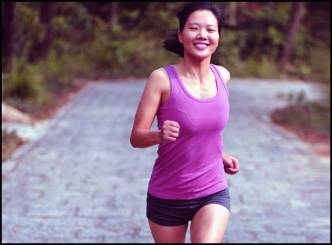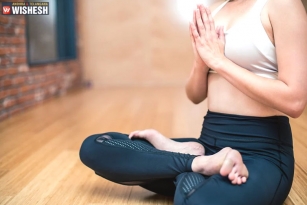
 While the benefits of performing yoga have long been discussed, it can often be an intimidating form of exercise to try. Some people picture a studio full of perfect-looking twenty-somethings who can contort their bodies into all kinds of interesting positions. Some people are afraid they might look silly if they don't know what to do or they are simply afraid of injuring themselves if they try to bend this way or that.
While the benefits of performing yoga have long been discussed, it can often be an intimidating form of exercise to try. Some people picture a studio full of perfect-looking twenty-somethings who can contort their bodies into all kinds of interesting positions. Some people are afraid they might look silly if they don't know what to do or they are simply afraid of injuring themselves if they try to bend this way or that.
As most people age, they start to lose balance and flexibility, among other indicators of physical fitness, making it even less likely that they would attempt an activity like yoga that involves stretching and holding poses for certain lengths of time. Recently a group of researchers in Taiwan developed a type of yoga exercise program that they've named “silver yoga.”
This program, developed by Chen, Tseng, and colleagues (2), consists of four phases:
20 minute warm-up of eight poses to loosen up the body;
20 minutes of hatha-style yoga in which seven gentle stretching postures are performed;
10 minutes of relaxation in which three activities to rest the body are performed; and
15 minutes of guided imagery to facilitate relaxation.
This program was critically reviewed by experts in the fields of yoga, elderly exercise, geriatric nursing, geriatric physical therapy, osteopathy, sports physiology, sports medicine, and/or sports injuries (2).
In a study published in Nursing Research, Chen, Fan, and colleagues (1) studied a group of 55 participants aged 65 or older who participated in 24 weeks of a three time per week silver yoga exercise program. Measures of body composition, cardiovascular-respiratory function, flexibility, muscular power and endurance, balance, and agility were taken before the study began, at twelve weeks, and at 24 weeks.
At the end of the study, participants in the silver yoga group had significantly reduced body fat percentage, decreased respiration rate (indicating that the exercise took less effort, and improved shoulder range of motion (right shoulder abduction) compared to their pre-silver yoga measurements (1). Additionally, the silver yoga group had improved in all measured physical fitness categories when compared to the control group at the end of the 24 week study.
As the general population ages, it's becoming more important than ever for senior-based health programs to be developed and implemented to keep our seniors healthy and reduce the burden on the healthcare system. A silver yoga program is just one of many exercise options for older adults to participate in to positively affect their health. The importance of the above study is that it shows that exercise programs tailored specifically to the abilities and needs of an older population can, in fact, improve their overall physical health.

























